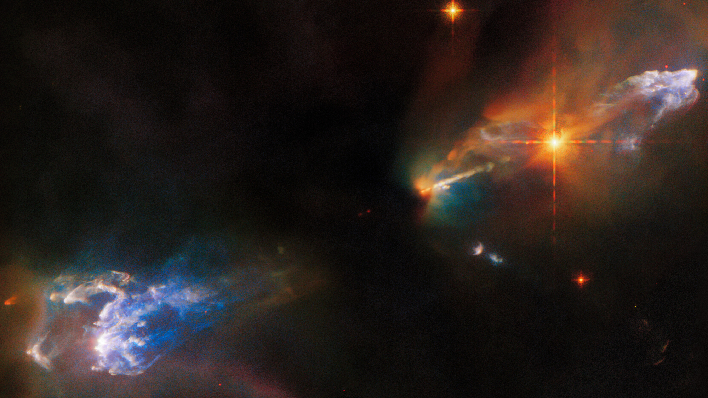NASA's JWST Captures A Newborn Star Spewing Supersonic Jets In Unprecedented Detail

According to NASA, Herbig-Haro (HH) objects are radiant regions surrounding newborn stars formed as stellar winds or jets of gas spewing from the infant stars create shock waves colliding with nearby gas and dust at high speeds. Webb's ability to capture images in infrared makes it the perfect observatory to study these objects in deep space, as it can image infrared light from molecules excited by turbulent conditions.

The more recent image from Webb highlights bow shocks to the southeast (lower-left) and northwest (upper-right), as well as a narrow bipolar jet that powers both. NASA remarked, "The inner jet is seen to 'wiggle' with mirror symmetry on either side of the central protostar." This aligns with past observations on more minor scales and suggests the protostar could be an unresolved binary star.
The velocities of the innermost outflow structures were measured to be about 48-60mps. Because the difference in speed between these sections of the outflow and the leading material they are colliding with are much smaller, researchers stated that outflows from the youngest stars are mostly made up of molecules.
HH 211 is located about 1,000 light-years from Earth in Perseus's constellation and is one of the youngest and nearest protostellar outflows. This makes it an ideal object for Webb to continue capturing data about in the future.

